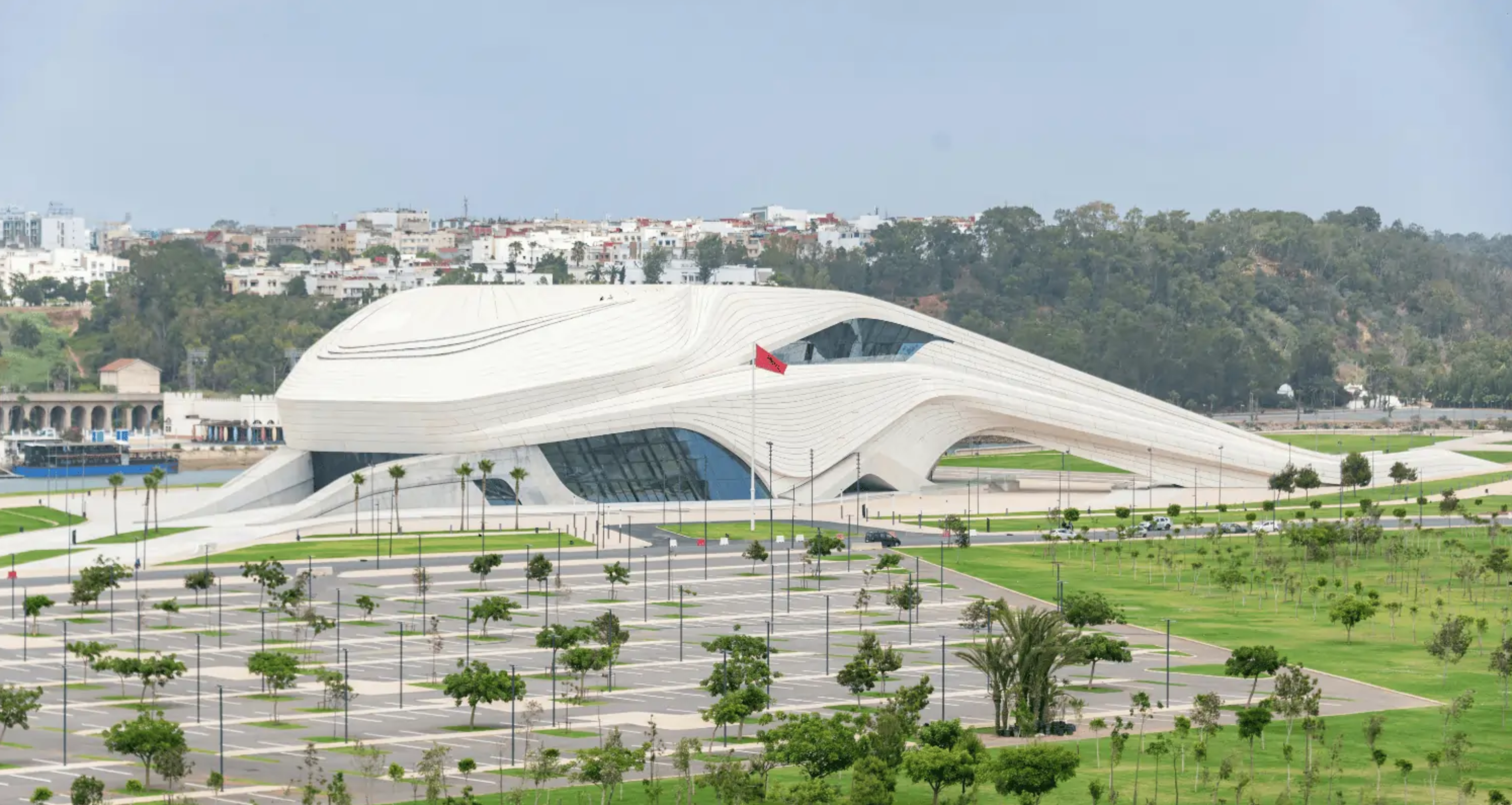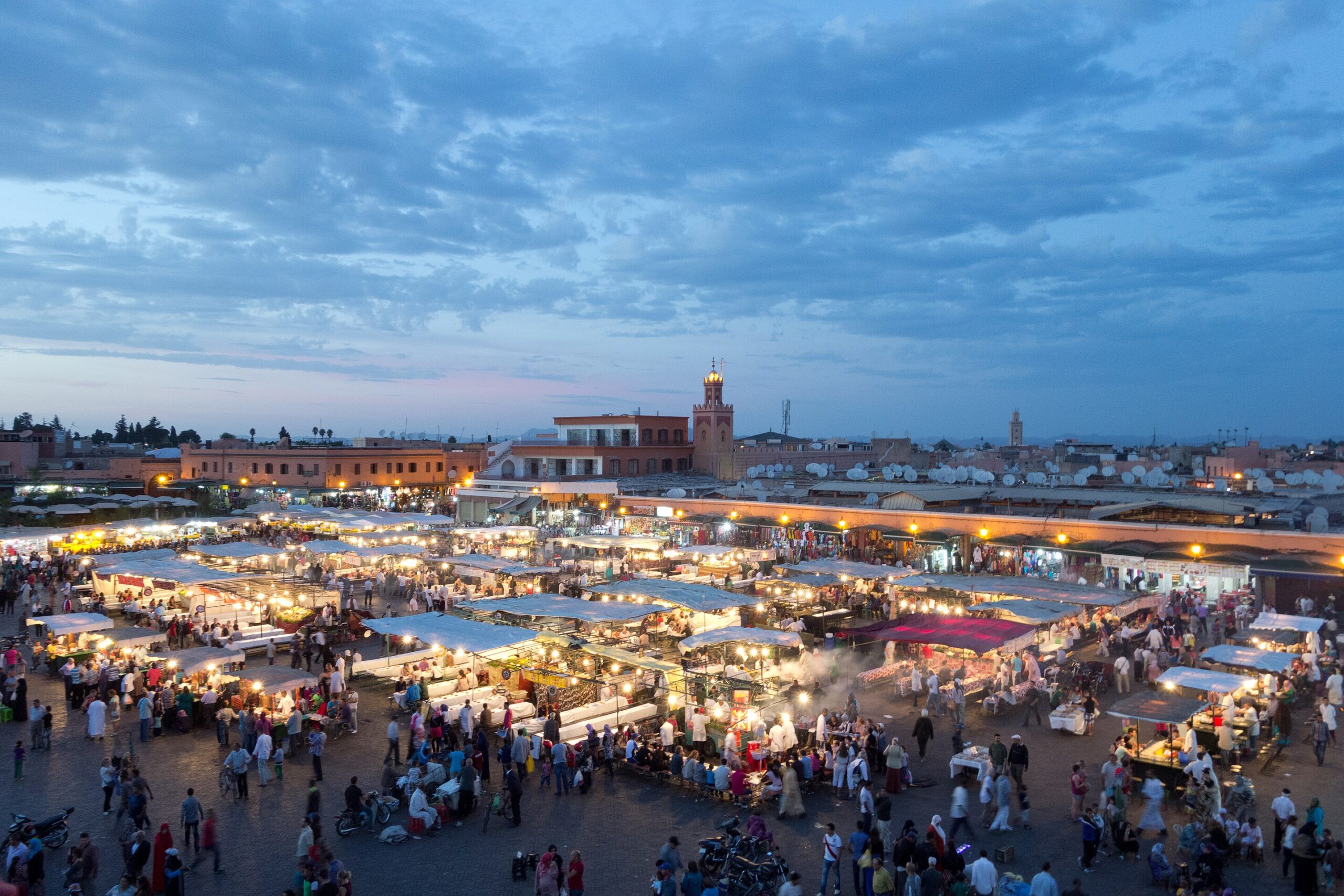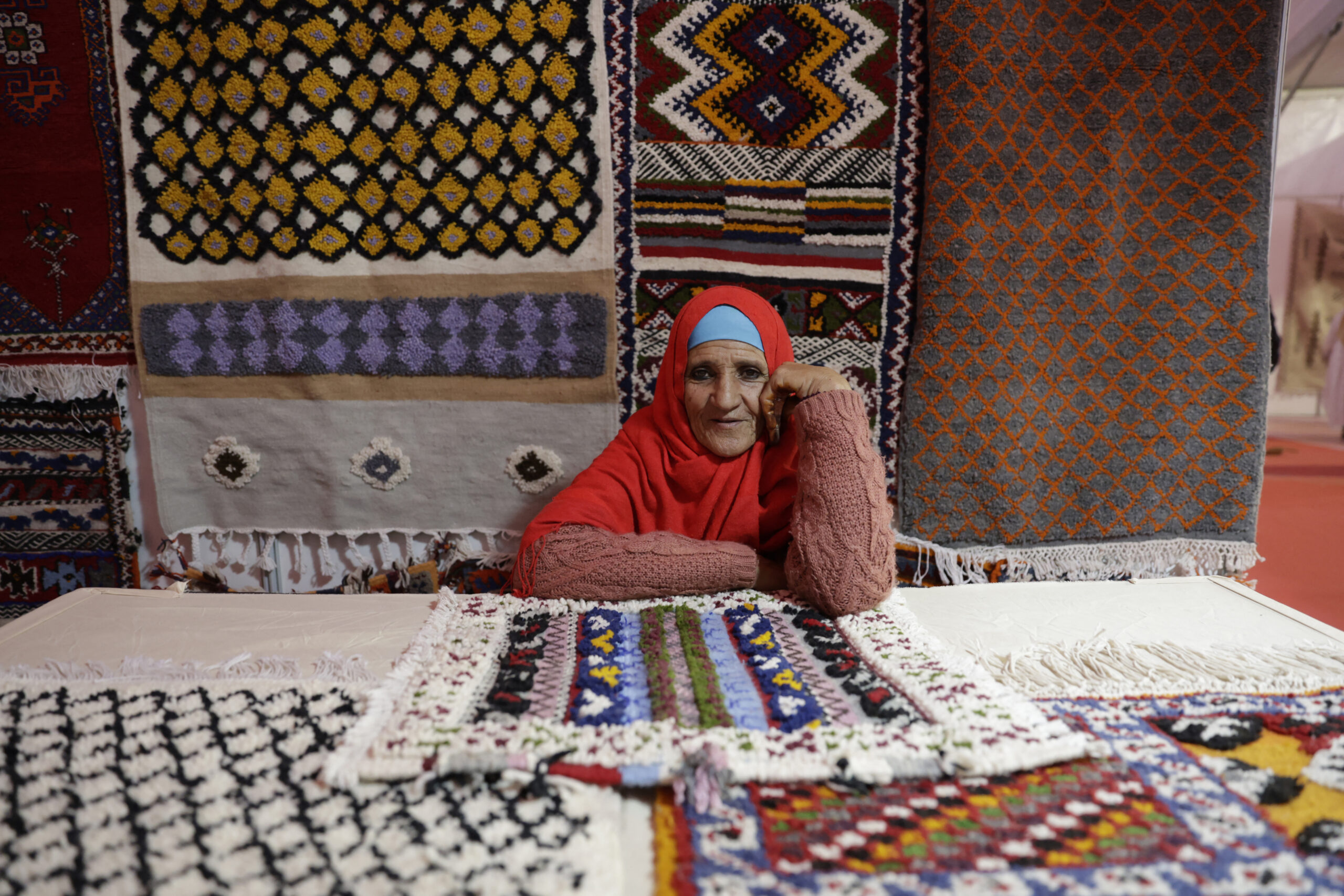Moroccan architecture reflects a rich tapestry of cultural influences spanning centuries. From ancient Berber fortifications to grand Islamic mosques, the country’s built environment showcases a unique blend of styles and techniques. The hallmarks of Moroccan architecture include intricate geometric patterns, colorful tilework, ornate arches, and lush courtyard gardens.

This distinctive aesthetic has roots in various civilizations that have shaped Morocco’s history. Islamic art and design principles brought by Arab conquerors merged with indigenous Berber traditions. Later, Andalusian refugees fleeing the Reconquista in Spain added their own artistic flair. French colonial rule in the 20th century introduced modernist elements, creating an eclectic mix of old and new.
Key structures that exemplify Moroccan architectural prowess include riads (traditional houses with interior courtyards), kasbahs (fortified citadels), and madrasas (Islamic schools). The Hassan tower in Rabat and the Koutoubia Mosque in Marrakech stand as testaments to the enduring appeal and grandeur of Moroccan design. These iconic buildings continue to inspire architects and designers worldwide, cementing Morocco’s place in the global architectural landscape.
Why Moroccan Architecture Captivates The World
There’s something truly mesmerizing about Moroccan architecture—a style that weaves together centuries of history and cultural diversity. Its vibrant colors, intricate patterns, and masterful craftsmanship create spaces that leave us in awe, drawing admiration from across the globe.
The geometric tilework, with its bold colors and meticulous designs, turns even the simplest corners into visual masterpieces. And let’s not forget the arches and carvings that showcase the unmatched skill of Moroccan artisans—each detail tells a story, making every building unique and unforgettable.
What makes Moroccan architecture so captivating is its seamless fusion of cultural influences. By blending Arab, Berber, and Andalusian traditions, it offers a style that feels both exotic and universally appealing. These designs aren’t just beautiful—they’re also practical. From cool courtyards to shaded alcoves, the architecture harmonizes with the environment, providing comfort and sustainability.

The Blend of Tradition and Innovation
Moroccan architecture isn’t just a relic of the past; it’s a living art form that continues to evolve. We’re inspired by how it balances tradition with modern creativity, preserving its heritage while embracing fresh ideas.
Take the Grand Theater of Rabat, for example. Designed by Zaha Hadid, it redefines Moroccan design by merging the elegance of Islamic patterns with cutting-edge innovation. Ancient techniques, like rammed earth construction (pisé), are being reimagined to create stunning, eco-friendly buildings that respect tradition while looking toward the future.

Even in today’s homes, the influence of Moroccan architecture shines through. Courtyards, fountains, and ornate tilework are integrated into modern designs, offering a perfect blend of comfort and cultural authenticity. This style continues to inspire architects around the world, proving that timeless beauty and modern functionality can coexist effortlessly.
The Historical Roots of Moroccan Architecture
At the heart of Moroccan architecture lies the legacy of the Berber people, whose structures reflect harmony with nature and ingenious use of local materials. Iconic kasbahs, made of mud bricks and stone, seamlessly blend into the rugged landscape, embodying both practicality and beauty.
Berber culture also introduced the use of geometric patterns and symbolic designs. These elements, rich with cultural meaning, appear everywhere—from the walls of rural homes to the urban architecture of Moroccan cities. Early coastal influences, such as those from the Phoenicians, added new layers to Berber ingenuity, shaping early Moroccan settlements with advanced urban planning concepts.
The Impact of Islamic and Andalusian Cultures
The arrival of Islamic traditions brought a profound transformation to Moroccan architecture. Mosques became the centerpiece of cities, their intricate geometric patterns and calligraphy embodying a devotion to both faith and artistry. The influence of the Grand Mosque of Kairouan spread across the Maghreb, shaping designs in Morocco and beyond.

The arrival of Moorish culture from Al-Andalus introduced iconic features like colorful tilework, elaborate courtyards, and ornate arches. The Almohad dynasty further refined this style, building monumental mosques and madrasas that emphasized simplicity paired with grandeur. These architectural marvels remain timeless symbols of Morocco’s cultural richness and artistic innovation.
Key Features of Moroccan Architecture
At the heart of traditional Moroccan architecture lies the riad, a house centered around a tranquil courtyard. These inward-facing spaces are designed for privacy and comfort, often featuring fountains or small pools surrounded by lush greenery. The combination of fragrant plants and shaded areas creates a refreshing retreat from the Moroccan sun.
Riads reflect a striking contrast between their simple exteriors and elaborately decorated interiors. Wrought-iron balconies and windows overlook the courtyards, allowing for natural light and ventilation, while intricate ornamentation elevates every corner into a visual masterpiece.

Zellige Mosaics: Patterns of Precision
No feature of Moroccan architecture better reflects its artistic spirit than zellige mosaics. These hand-cut tiles, arranged in intricate geometric patterns, adorn spaces with a vivid testament to generations of Islamic craftsmanship.
The precision and patience required to create these designs are remarkable. Each piece contributes to a harmonious whole, adding vibrant color and intricate detail to Moroccan homes, mosques, and public spaces.
The Role of Arches, Domes, and Minarets
Arches, domes, and minarets are iconic features of Moroccan architecture, deeply rooted in Islamic traditions. The horseshoe arch, with its graceful curves, is a hallmark of doorways and windows, inviting both light and beauty into spaces.
Domes crown important buildings, blending intricate designs with functional benefits like improved acoustics and natural light. Minarets, the towering symbols of Moroccan skylines, serve as both a spiritual and architectural focal point. Adorned with detailed carvings and calligraphy, they embody the craftsmanship that defines Morocco’s rich architectural legacy.
Iconic Landmarks of Moroccan Architecture
The Koutoubia Mosque in Marrakech
Rising above the bustling streets of Marrakech, the Koutoubia Mosque is a symbol of the city’s spiritual and architectural heritage. Its 69-meter minaret, built in the 12th century, dominates the skyline, showcasing the intricate geometric patterns and ornate arches characteristic of Almohad design.
The mosque’s exterior is adorned with carved stone and ceramic inlays, while its prayer hall can accommodate 25,000 worshippers. At night, the illuminated minaret transforms into a breathtaking beacon visible across the city. Its influence extends far beyond Morocco, inspiring structures like the Giralda in Seville and the Hassan Tower in Rabat.
Hassan Tower in Rabat: A Symbol of Unfinished Grandeur
Standing as a testament to ambition and history, Hassan Tower in Rabat is an incomplete masterpiece of 12th-century architecture. Planned to be the world’s tallest minaret, construction ceased after Sultan Yacoub al-Mansour’s death in 1199, leaving the tower at 44 meters—just over half its intended height.
The tower’s intricate stonework and reddish hues make it a striking feature against the Rabat skyline. Surrounded by the ruins of what would have been a grand mosque, the site now includes the Mausoleum of Mohammed V, blending ancient and modern elements of Moroccan architecture.
Al-Qarawiyyin Mosque and University in Fez: A Center of Knowledge
Founded in 859 CE, Al-Qarawiyyin in Fez is a cornerstone of Islamic scholarship and the world’s oldest continuously operating university. Its architecture reflects the cultural and intellectual exchange that flourished during the Middle Ages.
The mosque’s courtyard is a masterpiece of zellige tilework and carved cedar, while its library preserves ancient manuscripts, including a 9th-century Quran. Recent renovations have ensured its historical significance remains intact while adapting it for modern use, solidifying its role as both a place of worship and a hub of learning.
Ait Benhaddou: The Legendary Kasbah
Nestled in southern Morocco, Ait Benhaddou is a stunning example of traditional earthen clay architecture. This UNESCO World Heritage site features red mud-brick buildings, fortified walls, and decorative towers that blend harmoniously with the surrounding landscape.
As a vital stop along ancient trade routes, Ait Benhaddou holds significant historical importance. Its cinematic allure has made it a backdrop for iconic films like Gladiator and Game of Thrones. While most residents have moved to modern homes, a few families continue to live within the ancient kasbah, preserving its timeless traditions.

The Modern Influence of Moroccan Design
Zellige tiles, with their vivid hues and precise geometric patterns, have become a cornerstone of modern interior design. From accent walls to bathrooms and kitchens, these handcrafted mosaics bring a unique visual identity to contemporary homes. Similarly, the iconic horseshoe arch, a hallmark of Moroccan architecture, is making its way into sleek entryways and modern interiors, offering a timeless touch.
Moroccan craftsmanship extends to ornate woodwork and metalwork, which have been reinterpreted in furniture and lighting design. Intricate lattice patterns now grace room dividers, decorative panels, and window screens, while textiles inspired by traditional Moroccan rugs add texture and warmth to global interiors.
Even urban architecture is embracing Moroccan principles. Modern riads are emerging in bustling cities, combining tranquil courtyards with contemporary amenities. This fusion of traditional Moroccan design with minimalist and Art Deco influences has created a distinctive aesthetic that resonates with designers and homeowners across the globe.

The Timeless Allure of Moroccan Architecture
The captivating beauty of Moroccan architecture lies in its ability to weave intricate designs, vibrant colors, and rich cultural heritage into spaces that feel both timeless and inspiring. This fusion of influences—Arab, Berber, Andalusian, and beyond—creates a visual language that continues to enchant and influence designers worldwide.
Experiencing Morocco’s Architectural Beauty
To truly appreciate the essence of Moroccan architecture, one must explore the medinas of Morocco’s imperial cities. In Marrakesh, the bustling streets reveal hidden treasures: ornate riads and hammams adorned with delicate zellige mosaics. Fez, home to the world’s oldest university, Al-Qarawiyyin, showcases the elegance of Islamic architectural mastery.
In Rabat, the fusion of tradition and modernity shines brightly, particularly in the Ambassadors district. Here, STORY Rabat invites guests to immerse themselves in an environment that seamlessly blends contemporary Moroccan architecture with Andalusian influences. Every detail, from its sculpted gardens to the thoughtfully designed interiors inspired by Ziryab, pays homage to Morocco’s artistic legacy. This luxury boutique hotel offers an intimate, bespoke experience where travelers can connect with the very soul of Moroccan design.
From the Kasbahs of the Atlas Mountains to the mud-brick structures of the Sahara, Morocco’s architectural marvels continue to inspire awe. Many are recognized as UNESCO World Heritage Sites, preserving their beauty and significance for generations to come. Whether in the grandeur of royal palaces, the charm of local homes, or the modern elegance of places like STORY Rabat, the allure of Moroccan architecture remains timeless.

Frequently Asked Questions
What are the defining characteristics of Moroccan architecture?
Moroccan architecture is known for its intricate geometric patterns and vibrant colors. Zellige tile mosaics, horseshoe arches, and ornate wood carvings are common decorative elements.
Courtyards, water features, and lush gardens are integral to traditional Moroccan designs. The use of local materials like clay, stone, and cedar wood is also characteristic.
How has Moroccan architecture evolved throughout history?
Moroccan architecture has been shaped by various civilizations over centuries. Roman influences are visible in ancient ruins like Volubilis.
Islamic architecture became dominant during the medieval period, introducing minarets and elaborate mosques. French colonial rule in the 20th century brought European architectural elements to urban areas.
What are the differences between traditional and modern Moroccan architecture?
Traditional Moroccan architecture focuses on privacy, with inward-facing designs and small windows. It emphasizes natural cooling methods and handcrafted decorations.
Modern Moroccan architecture often incorporates contemporary materials and technologies. It may blend traditional motifs with modern forms, creating a fusion of old and new styles.
Can you name some examples of famous Moroccan architectural landmarks?
The Hassan II Mosque in Casablanca is a renowned modern landmark. Its minaret is the world’s tallest at 210 meters.
Fez’s ancient medina, a UNESCO World Heritage site, showcases traditional Moroccan urban architecture. The Koutoubia Mosque in Marrakech is an iconic example of Almohad architecture.
How does the Mediterranean Revival style relate to classic Moroccan architecture?
Mediterranean Revival architecture draws inspiration from various Mediterranean styles, including Moroccan. It often incorporates elements like horseshoe arches, tile work, and courtyard layouts.
This style adapts Moroccan architectural features to suit different climates and cultural contexts. It’s popular in regions like Florida and California.
What distinguishes Berber architectural style from other Moroccan architectural influences?
Berber architecture is characterized by its use of natural materials and adaptation to harsh environments. Mud-brick construction and flat roofs are common in Berber buildings.
Berber designs often feature simpler geometric patterns compared to elaborate Arab-influenced styles. Their architecture emphasizes functionality and community spaces.
Credit to https://www.story-rabat.com/moroccan-architecture/



